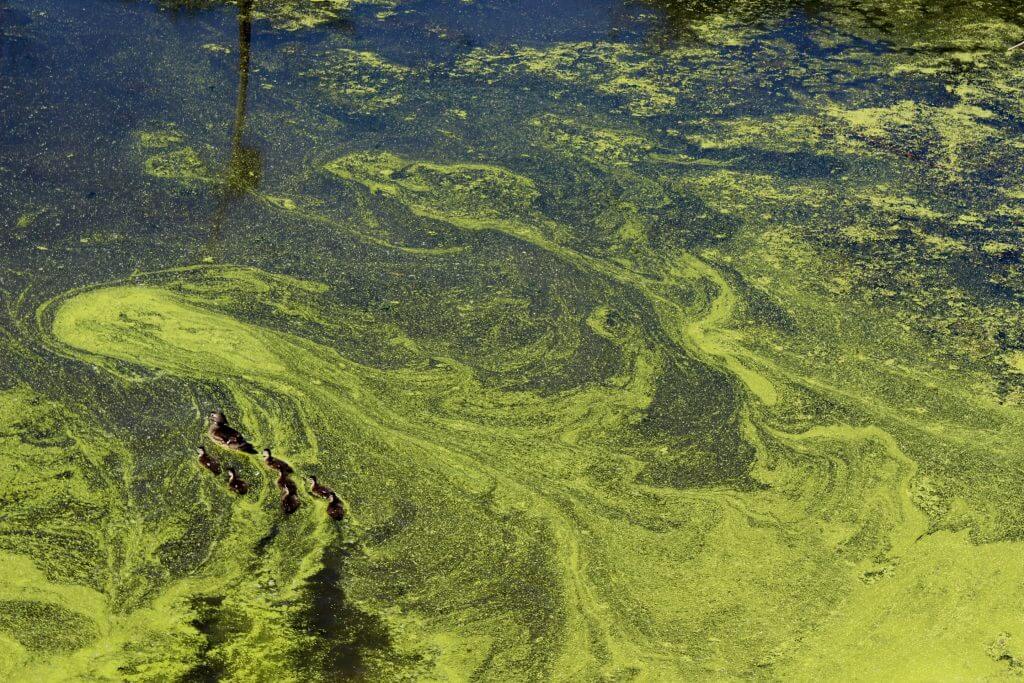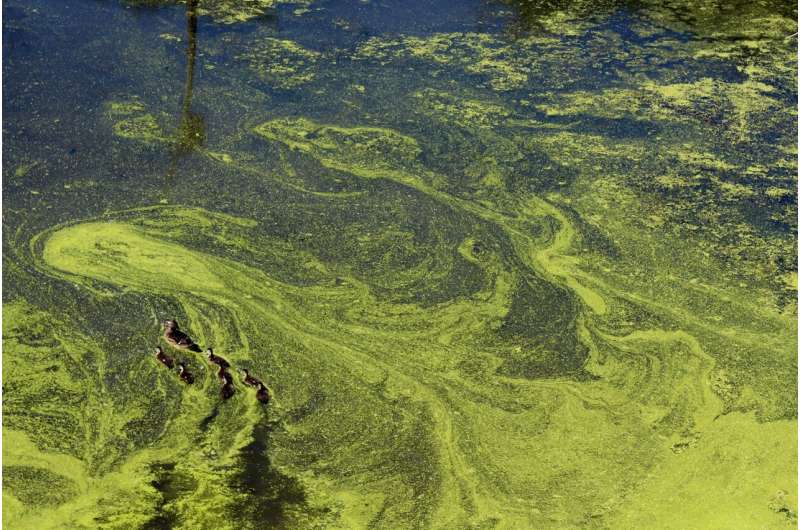
Algal toxin produced by brackish water species detected in Oder water, natural causes unlikely (Image Credit: Phys.org)

The latest investigations confirm the suspicion that the mass development of a toxic brackish water alga has occurred in the Oder. This phenomenon could have played a role in the massive kill of fish, mussels, snails, and possibly other animal species. The researchers continue to believe that it is not a natural phenomenon, given that the algae species Prymnesium parvum does not, under natural conditions, occur in large numbers on the stretches of the Oder that have been hit. To occur in large numbers in this area, the species is dependent on salinity levels that can only be produced by industrial discharges.
The Leibniz-Institute of Freshwater Ecology and Inland Fisheries (IGB) had detected and microscopically identified this toxic brackish water alga in all samples taken from the middle reaches of the Oder over the past few days, but the associated algal toxin had yet to be detected. The samples taken by IGB have now been analyzed by the University of Vienna’s Department of Food Chemistry and Toxicology, which has confirmed the assumptions.
“We were able to unequivocally detect significant quantities of a subtype of the algal toxin, known as prymnesins, in samples taken from various parts of the Oder,” stated Dr. Elisabeth Varga, a researcher from the University of Vienna who carried out the analysis at the university’s Mass Spectrometry Center.
“We know from previous research on this algal toxin that the toxin is strongly bound to the algae. When this specific algae species is present in very large quantities, as is the case in the samples from the Oder, it must also be assumed that the toxin concentration is very high. Since all of the samples were taken at an advanced stage of the algal bloom, a direct connection with the fish and mollusk kill can be assumed,” explained Varga. However, there is still a need for further research on the toxicity of prymnesins, she added, and it has not yet been fully clarified which other groups of organisms may be affected apart from fish and mollusks. This is also true for potential effects on the human organism.
Scientists are in the process of determining the exact quantity of the toxin from the biomass samples of the alga and the water samples taken, but this procedure is more time-consuming and technically complex. “Prymnesins are very specific organic compounds, with up to 107 carbon atoms, as far as is known. Although these compounds can, in principle, be measured by advanced mass spectrometers, in practice only a few laboratories in Europe analyze them, partly because there is little need to investigate them,” explained Dr. Stephanie Spahr, leader of the Organic Contaminants research group at IGB.
There are no analytical standards for these toxins available anywhere in the world. For this reason, the toxins were unambiguously classified using previously characterized strains that had been cultivated at the University of Copenhagen (Per J. Hansen’s research group) and characterized at the Technical University of Denmark (Thomas O. Larsen’s research group) in the context of international projects.
“The Oder is currently suffering from an extreme mass development of planktonic algae. Prymnesium parvum is highly dominant in all samples; in the Oder, this alga accounts for at least half of the total algal biomass, and even after being diluted by the influx of the river Warta, it still stands at 36%. To my knowledge, such a mass development has never been observed before in our freshwaters. The phenomenon was probably made possible by salt discharges, copious amounts of nutrients, high water temperatures, and long residence times in barrages and in the developed river,” noted IGB scientist Dr. Jan Köhler, leader of the Photosynthesis and Growth of Phytoplankton and Macrophytes research group.
“Now what is missing is the genetic characterization of the algal strain. More than 50 strains of Prymnesium parvum have been described; they differ greatly in terms of their environmental requirements and toxin production. The toxins are currently classified into three groups, with each group consisting of more than ten different toxins; this poses a significant challenge when it comes to determining them,” stated Jan Köhler.
“We are now immediately contacting the competent authorities so that the research results can be integrated into new measurement campaigns and programs,” remarked IGB scientist Dr. Tobias Goldhammer, leader of the Nutrient Cycles and Chemical Analytics research group. This way, further developments on the Oder can be better monitored, he added. “The elevated salinity levels we measured in the samples occur more frequently in the Oder; they are triggered by industrial pollution in the upper reaches. Consequently, if salt levels do not decrease and we continue to experience excessively hot and dry summers, such toxic mass developments could occur again in the future.”
New analysis: Satellite data confirm massive algal bloom in the Oder River
A massive algae bloom can be detected in the Oder River using satellite data. Experts from Brockmann Consult (a company for environmental data analysis and software located in Hamburg) have processed satellite data from the European Copernicus satellite Sentinel 2 in close cooperation with the Leibniz Institute of Freshwater Ecology and Inland Fisheries (IGB) and the AG Modeling Methods in Remote Sensing at the University of Leipzig and calculated chlorophyll concentrations, which serve as indicators of algal blooms.
The Sentinel 2 satellite carries an optical sensor that can be used to determine water color and infer which color-giving substances are in the water. Color-providing pigments such as the chlorophyll in algae change the incident sunlight, and the sensor onboard of the satellite can detect this change in the light. This means that unusually high concentrations of algae can also be detected.
In this initial analysis, three selected time periods were examined, covering three profiles of chlorophyll concentrations in the Odra River in late July, early August and mid-August. At the end of July, the concentration of the entire river course was at about a medium level with a slight increase in the southern section of the river around the town of Opode. In early August, a jump in chlorophyll concentration is seen at the level of Wroclaw, and 10 to 12 days later the algal bloom has moved further downstream like a wave and spread to a larger area of the Odra River.
The satellite data have great potential to help further clarify the Odra disaster. The new results will help to better understand the ongoing toxic prymnesium algal bloom and to narrow down its origin in space and time. For this purpose, aquatic ecological monitoring data and water samples are combined with satellite data, which are also available from the time of the onset of the environmental disaster. These analyses are to be continued in the coming weeks.
Explore further
Germany: No single cause for massive Oder River fish die-off
Algal toxin produced by brackish water species detected in Oder water, natural causes unlikely (2022, August 23)
retrieved 24 August 2022
from https://phys.org/news/2022-08-algal-toxin-brackish-species-oder.html
part may be reproduced without the written permission. The content is provided for information purposes only.





